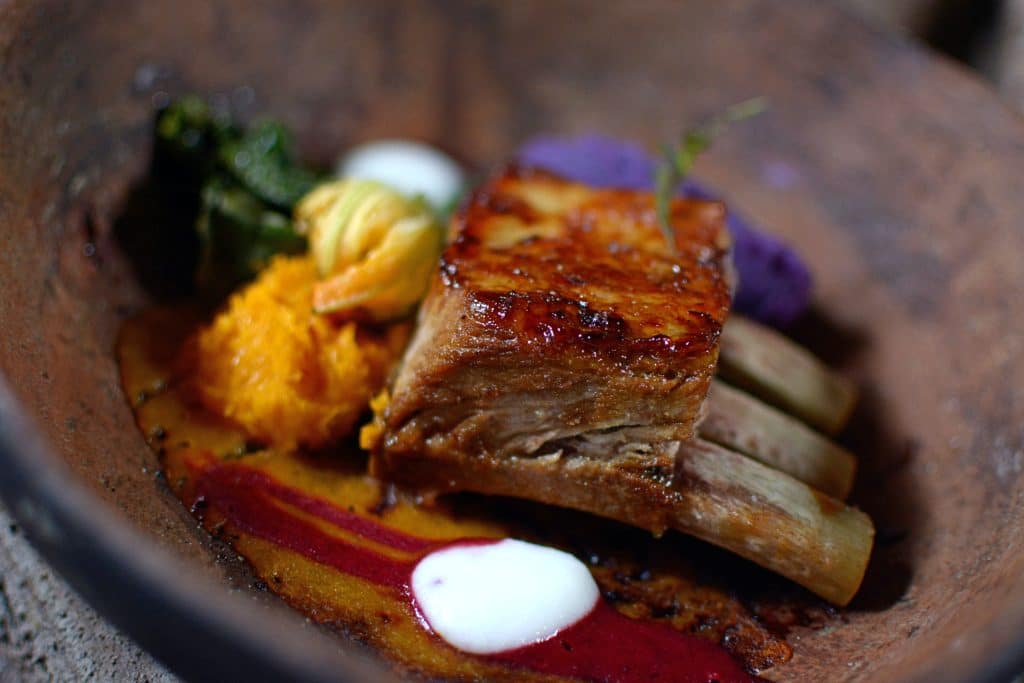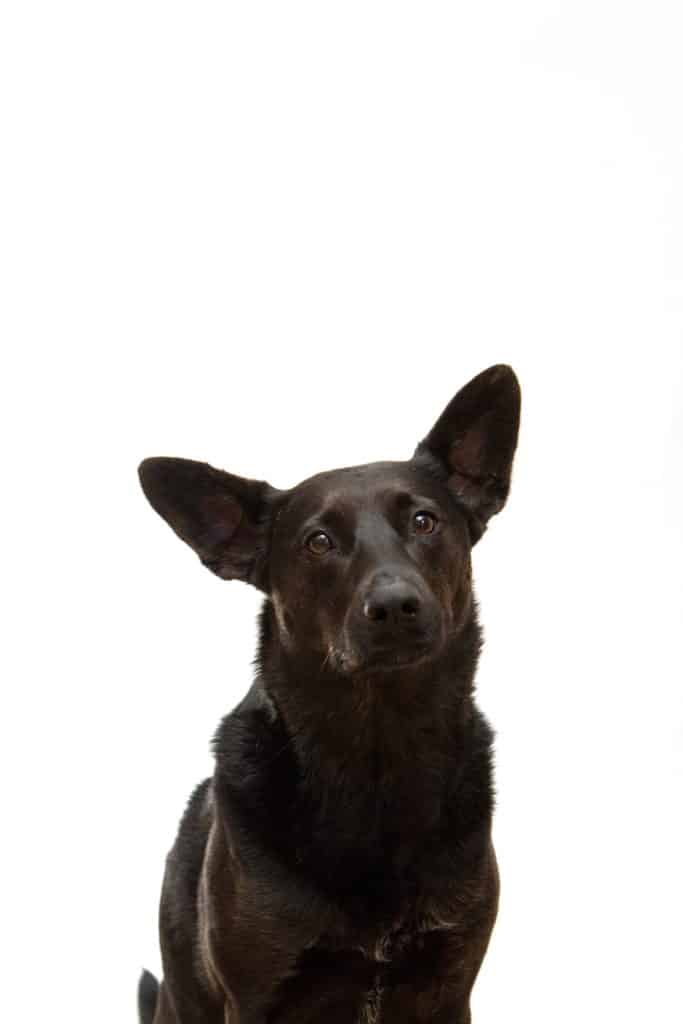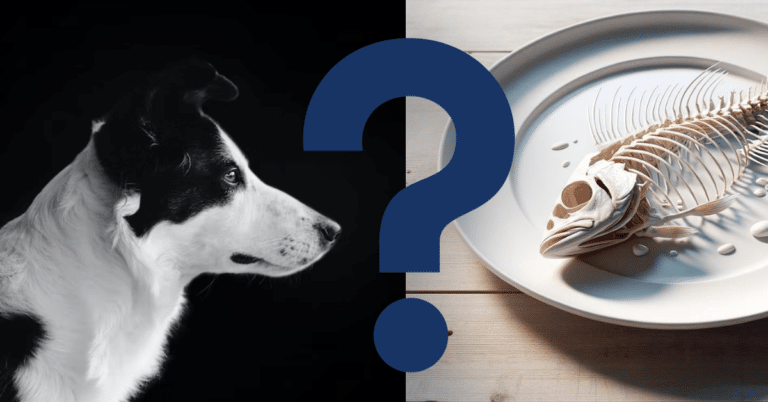Can Dogs Eat Lamb Bones? A Vet’s Opinion
Lamb bones are a great source of nutrients, but can dogs eat lamb bones?
Let’s dive in:
Dogs may usually safely eat raw lamb bones, such as raw lamb rib bones or raw lamb neck bones. By naturally supplying nutrients and cleaning their teeth and gums as they chew, the bones can assist maintain dental health.
Benefits Of Lamb Bones For Dogs
When fed to dogs in a safe and sensible way, lamb bones can offer several advantages. The following are some possible advantages of lamb bones for dogs:
- Dental health: By eliminating plaque and tartar accumulation, chewing on bones can help a dog’s teeth stay clean. By stimulating the gums and removing food debris mechanically, chewing on bones can improve oral health in general.
- Dogs’ chewing on bones may be an interesting and psychologically stimulating exercise. It can assist them pass the time and provide their natural chewing urges a natural outlet.
- Nutritional Value: Trace minerals, calcium, and phosphorus may all be found in lamb bones. These vitamins and minerals can support strong bones, teeth, and general growth in dogs by helping to create a diet that is balanced.
- The marrow inside lamb bones is a rich source of nutrients, including healthy fats, vitamins, and minerals. It also serves as a source of enzymes. The marrow, which increases the total nutritional content of the bones, can provide nutritional benefits to dogs.
- Chewing on bones may make dogs feel satisfied and can help them cope with stress or anxiety. This has positive effects on their behaviour. Additionally, it can reroute their chewing away from damaging tendencies like chewing on shoes or furniture.
Although feeding lamb bones to dogs may have some advantages, it’s important to follow the right procedures and make sure the bones are suitable for your dog. When giving your dog a bone to chew, always keep an eye on them and make sure the bone you give them is safe and appropriate for their size, chewing style, and dental health. For specific guidance if you have any worries or inquiries, it is advised to speak with your veterinarian.

How To Safely Give Lamb Bones To Dogs
Safety must always come first when feeding lamb bones to dogs to avoid any potential risks. Following are recommendations for properly feeding dogs lamb bones:
- Choose the Right Bones: Give your dog lamb bones that are the right size. The bones should not only be large enough to prevent your dog from swallowing them whole, but also not too little to provide a choking risk.
- Give your dog only raw bones; never prepare bones for your dog. Cooking can make bones more brittle, raising the possibility that they could splinter and endanger your dog’s digestive system. Raw bones are more malleable and less prone to splinter into potentially harmful pieces.
- Always keep an eye on your dog when they are gnawing on bones. This enables you to step in if they start biting off big chunks of bone or if the bone starts to pose a choking hazard. Regular observation guarantees their security while eating.
- Gradually introduce bones if your dog has never chewed on them. Start off with softer, smaller bones to get your dog used to the action. Prior to introducing larger or tougher bones, observe how they react and how they chew.
- Don’t Let Your Dog gnaw on a Bone Forever: Don’t let your dog gnaw on a bone for too long. Remove the bone after a suitable amount of time, usually 15 to 30 minutes, to avoid damaging their teeth excessively or risking digestive problems by swallowing too much bone material.
- Keep Safely Stored: When not in use, keep the lamb bones in a safe place. To keep them fresh and stop bacterial development, store them in the freezer or refrigerator. Bones that are stored properly are less likely to attract pests or get contaminated.
- Individual Considerations: Each dog is unique, and some may have dietary limitations or dental problems that exclude the use of chewing bones. Based on your dog’s health, age, and chewing habits, talk to your vet to establish whether lamb bones are suitable for them.
Bear in mind that while lamb bones have advantages, not all dogs should consume them. It’s always better to speak with your veterinarian for specific guidance if you have any worries or questions about feeding lamb bones to your dog.
Will Lamb Bones Make A Dog Sick?
Lamb bones can be risky to feed to dogs, and if not administered properly, they may make a dog ill. The following are a few possible health hazards linked to lamb bones:
- Dogs can choke on bones, especially if they are little or if they bite off huge chunks of the bone. This may restrict the airway, resulting in choking or respiratory difficulty.
- Dogs can get tooth injuries from bones, especially hard ones. Chewing on bones erratically can lead to broken jaws, shattered teeth, and injury to the gums and oral tissues.
- Gastrointestinal Issues: Dogs who consume bones may experience digestive issues. Large or splintered bone pieces may tear or impede the digestive tract, causing pain, nausea, diarrhoea, or even intestinal obstruction, a potentially fatal illness.
- Bacterial Contamination: Dogs may experience health concerns if they consume raw bones since they may contain Salmonella or E. coli germs. These bacteria have the potential to upset the stomach or potentially result in illnesses that need veterinarian care.
- Pancreatitis: An inflammation of the pancreas, pancreatitis can occur in some dogs. In those who are sensitive, consuming fatty bone marrow can cause this illness or make it worse.
It’s critical to use safe feeding techniques when delivering lamb bones to dogs to reduce the likelihood of getting them ill. Select bones that are the right size for your dog, keep an eye on them as they chew, and take the bone away if it gets too small and becomes a choking hazard. Additionally, never provide cooked bones; cooked bones are more prone to splinter. Always serve raw bones.
However, it’s crucial to remember that not all dogs react well to bones, even with the right safeguards. Some people may be unable to ingest bones due to specific dietary sensitivities, digestive problems, or dental disorders.

A Vet’s Summary
Given the hazards of choking, tooth damage, digestive problems, and bacterial contamination, some veterinarians may advise against giving dogs any kind of bone. They could suggest safer alternatives, such as chew toys or snacks made especially for dogs.
Other doctors could adopt a more individualized strategy and take into account things like the dog’s size, chewing habits, dental health, and general well-being. They could advise restricting access to raw lamb bones as a leisure pastime while taking care to reduce the hazards involved.
It’s always recommended to speak with your veterinarian before giving your dog lamb bones or any other sort of bone. They may offer individualized guidance based on the health issues, nutritional requirements, and risk factors affecting your dog, enabling you to make an educated choice that puts your dog’s health and safety first. To stay on safe side, you can add dog probiotics to your pet’s routine. This will help you maintain their health and immunity.
Videos To Watch
If you are wondering whether dogs can eat lamb bones, watch this:
If you are wondering whether lamb bones are harmful, watch this:



